Papers by Antonino Messina
Nuclear Instruments and Methods in Physics Research Section B: Beam Interactions with Materials and Atoms, 1996
We study the two-photon interaction of a two-state localized system with two modes of a quantized... more We study the two-photon interaction of a two-state localized system with two modes of a quantized electromagnetic or elastic field. Assuming the coupling strength and the atom-field detuning depending on the mode populations, we find that the quantum atomic dynamics manifests nonclassical features related to the specific nonlinear model investigated.
Fortschritte der Physik, 2001
Physics Letters A, 1980
Soliton-like solutions are shown to exist in a one-dimensional chain of spins l/2 strongly couple... more Soliton-like solutions are shown to exist in a one-dimensional chain of spins l/2 strongly coupled to the lattice phonons. The features of these solutions are investigated and discussed.
Journal of Mathematical Analysis and Applications, 2005
New exact solutions of the evolution-type equations are constructed by means of a non-point (cont... more New exact solutions of the evolution-type equations are constructed by means of a non-point (contact) symmetries. Also we analyzed the discrete symmetries of Maxwell equations in vacuum and decoupled ones to the four independent equations that can be solved independently.
Fortschritte der Physik, 2003
The possibility of revealing non‐classical behaviours in the dynamics of a trapped ion via measur... more The possibility of revealing non‐classical behaviours in the dynamics of a trapped ion via measurements of the mean value of suitable operators is reported. In particular we focus on the manifestation known as “Parity Effect” which may be observed directly measuring the expectation value of an appropriate correlation operator. The experimental feasibility of our proposal is discussed.
The European Physical Journal Special Topics, 2008
The exact dynamics of a disordered spin star system, describing a central spin coupled to N disti... more The exact dynamics of a disordered spin star system, describing a central spin coupled to N distinguishable and non interacting spins 1 2 , is reported. Exploiting their interaction with the central single spin system, we present possible conditional schemes for the generation of W-like states, as well as of well-defined angular momentum states, of the N uncoupled spins. We provide in addition a way to estimate the coupling intensity between each of the N spins and the central one. Finally the feasibility of our procedure is briefly discussed.
Physical Review B, 2007
A theoretical scheme to generate multipartite entangled states in a Josephson planar-designed arc... more A theoretical scheme to generate multipartite entangled states in a Josephson planar-designed architecture is reported. This scheme improves the one published in [Phys. Rev. B 74, 104503 (2006)] since it speeds up the generation of W entangled states in an M × N array of inductively coupled Josephson flux qubits by reducing the number of necessary steps. In addition, the same protocol is shown to be able to transfer the W state from one row to the other.
Physical Review A, 2008
In population trapping the occupation of a decaying quantum level keeps a constant non-zero value... more In population trapping the occupation of a decaying quantum level keeps a constant non-zero value. We show that an atom-cavity system interacting with an environment characterized by a non-flat spectrum, in the non-Markovian limit, exhibits such a behavior, effectively realizing the preservation of nonclassical states against dissipation. Our results allow to understand the role of cavity losses in hybrid solid state systems and pave the way to the proper description of leakage in the recently developed cavity quantum electrodynamic systems.
Journal of Physics B: Atomic, Molecular and Optical Physics, 2010
We exploit the tripartite negativity to study the thermal correlations in a tripartite system, th... more We exploit the tripartite negativity to study the thermal correlations in a tripartite system, that is the three outer spins interacting with the central one in a spinstar system. We analyze the dependence of such correlations on the homogeneity of the interactions, starting from the case where central-outer spin interactions are identical and then focusing on the case where the three coupling constants are different. We single out some important differences between the negativity and the concurrence.
The European Physical Journal B, 2006
Acta Physica Hungarica B) Quantum Electronics, 2005
The dynamics of a system composed by two pairs of dipolarly coupled two-level atoms is exactly st... more The dynamics of a system composed by two pairs of dipolarly coupled two-level atoms is exactly studied. We show that the initial entanglement stored in a couple of atoms not directly interacting is fully transferred to the other pair in a periodic way. The observability of this phenomenon in laboratory is briefly discussed both in terms of its temporal scale and of its stability against uncertainties in the geometrical parameters defining the physical system.

2009 11th International Conference on Transparent Optical Networks, 2009
The implementation of more and more efficient nanodevices exploitable in applicative contexts lik... more The implementation of more and more efficient nanodevices exploitable in applicative contexts like for example quantum computers often requires a highly challenging miniaturizing process aimed at packing a huge number of point-like basic elements whose dynamics mimics indeed that of a qubit. Stimulated by such a requirement, over the last few years theoretical schemes using the language of the spin frac12 system models have been investigated. The main reason is that besides the simple dynamical behaviour of each elementary constituent these Hamiltonian models do indeed capture basic ingredients of several physical situations differing one another mainly for the numerical values of some relevant parameters appearing in the same model. Examples of physical systems admitting a reasonable description in terms of spin models may be a collection of mutually interacting superconducting flux qubits immersed in appropriate bosonic baths or few electron spins, mutually coupled or not, interacting with a bath of a huge number of nuclear spins. The question deserving the highest interest for quantum computing is the extent at which the quantum coherences essential for any process based on the superposition principle may be protected against the unavoidable degradation of the purity of the state of the small system. In this paper a specific spin model, namely a spin star model, is adopted and its dynamical behaviour is investigated. Particular emphasis has been reserved to the dynamical behaviour of the entanglement get established within the small system or between the system and the bath. The genuine non-Markovian behaviour of the system makes quite challenging to find exact solutions of this problem which therefore is often numerically coped with.
Physical Review A, 1976
The low-lying levels in the eigenvalue spectrum of a nonresonant maser model are investigated at ... more The low-lying levels in the eigenvalue spectrum of a nonresonant maser model are investigated at T = O'K when the atom-photon coupling constant is strong enough to cause the appearance of the so-called superradiant phase transition in the thermodynamic properties of the system. The frequency of the field is assumed to be larger than the Larmor frequency of the pseudospins, and eigenfunctions and eigenvalues are found using a technique based on the theory of continuants. The eigenvalue spectrum turns out to consist of a set of slightly split doublets, and the corresponding eigenstates are such that the dynamical properties of the system in each doublet closely correspond to tunneling between equivalent energy configurations. The atoms are shown to be surrounded by a cloud of virtual photons which accompany them during the tunneling motion.
Physical Review B, 2005
The quantum dynamics of two superconducting flux qubits in the presence of a nonclassical microwa... more The quantum dynamics of two superconducting flux qubits in the presence of a nonclassical microwave field of a resonant cavity is investigated. We propose a quantum computing scheme, based on the sequential interaction of the Josephson qubits with the field mode, by which it is possible to generate "on demand" maximally entangled states of the two qubits. The effects of cavity losses on the system dynamics are carefully taken into account.
Physica Scripta, 2009
... Page 2. IOP PUBLISHING PHYSICA SCRIPTA Phys. Scr. 80 (2009) 058102 (2pp) doi:10.1088/0031-894... more ... Page 2. IOP PUBLISHING PHYSICA SCRIPTA Phys. Scr. 80 (2009) 058102 (2pp) doi:10.1088/0031-8949/80/05/058102 Radon transform as a set of probability distributions B Militello1, VI Man'ko2, MA Man'ko2 and A Messina1 ...
Optics and Spectroscopy, 2011
ABSTRACT The Stimulated Raman adiabatic passage (STIRAP) in three-state systems in the presence o... more ABSTRACT The Stimulated Raman adiabatic passage (STIRAP) in three-state systems in the presence of quantum noise is considered. A comparison is made between different models, one based on a phenomenological introduction of decays, one traceable back to a microscopic description of the system-environment interaction. Effects related, to off-resonance in the coupling between the involved states are considered.
Optics and Spectroscopy, 2003
The preparation of a wide class of entangled vibrational states involving two or three phononic m... more The preparation of a wide class of entangled vibrational states involving two or three phononic modes of a three-dimensional trapped ion has been reported in the literature from both theoretical and experimental points of view. Here, the time evolution of such a system from an initial condition wherein two oscillatory modes (Mx, My) are reciprocally entangled and both are disentangled to the third mode (Mz) is studied. By coupling one of the entangled oscillators (Mx) with the third oscillator (Mz), a correlation between the two uncoupled modes (My, Mz) is induced, well visible when the mean value of a suitable operator is considered. A method of measuring the expectation value of a vibrational observable is briefly sketched and then exploited in order to reveal such nonclassical behavior.
Journal of Physics A: Mathematical and Theoretical, 2007
The problem of a trapped ion subjected to the action of two or more independent Raman schemes is ... more The problem of a trapped ion subjected to the action of two or more independent Raman schemes is analysed through a suitable time-dependent perturbative approach based on the factorization of the evolution operator in terms of other unitary operators. We show that the dynamics of the system may be traced back to an effective Hamiltonian up to a suitable dressing. Moreover, we give the method to write the master equation corresponding to the case wherein spontaneous decays occur.

Journal of Modern Optics, 1997
A conditional generation of single-mode Fock states in the framework of a non-degenerate two-phot... more A conditional generation of single-mode Fock states in the framework of a non-degenerate two-photon micromaser theory is reported. The exact expression for the probability of success of the experiment is obtained. We show that it is possible to conjugate experimentally interesting values of this probability, with the generation of number states having a controllable high intensity. This objective is reached by constructing analytically detailed rules about the cavity state at t = 0 as well as the atom–field interaction times as functions of the available operating conditions. These rules play a central role in our Fock-state-building process, leading to an essential countering of the Stark-shift-induced detuning effects. The practical reliability of the proposal is carefully discussed from several points of view. Some possible applicative potentialities of our scheme are briefly pointed out.
The European Physical Journal B, 2001
: A simple way to acquire information on the mean values of the phase operators sinϕ and cosϕ o... more : A simple way to acquire information on the mean values of the phase operators sinϕ and cosϕ of an ultrasmall Josephson junction prepared in an arbitrary pure or not state is reported. Our proposal exploits the recently predicted occurrence of current spikes in the I-V characteristic of a mesojunction irradiated by a quantum single-mode low-intensity coherent electromagnetic field. A necessary condition for the validity of our treatment is presented and discussed.

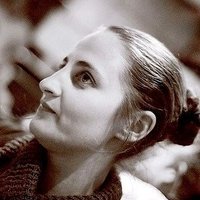




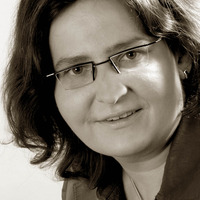
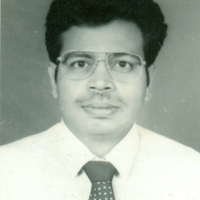

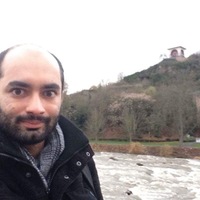
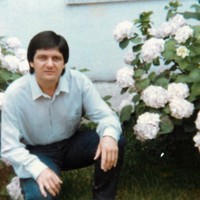
Uploads
Papers by Antonino Messina